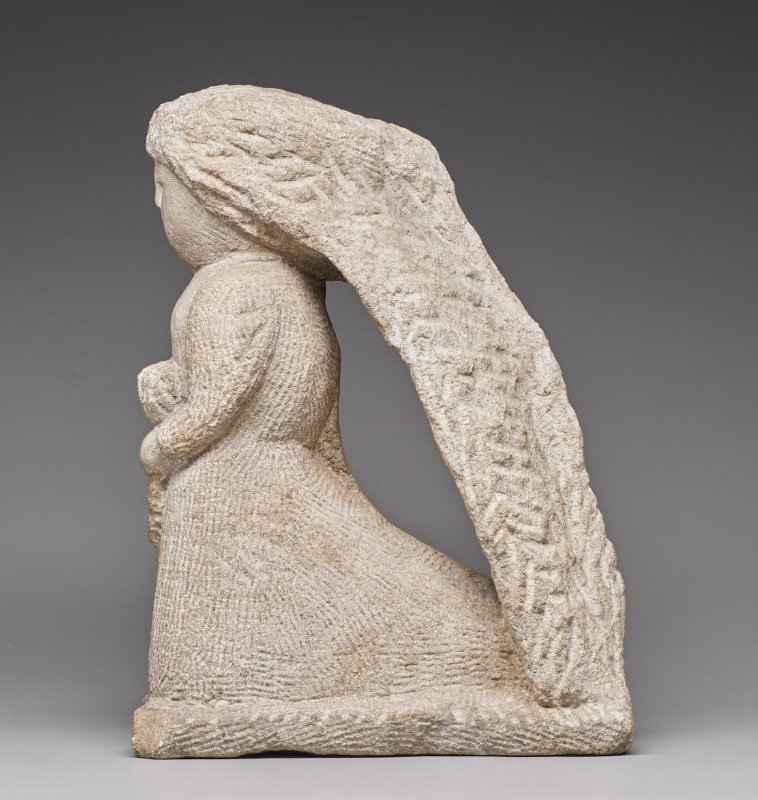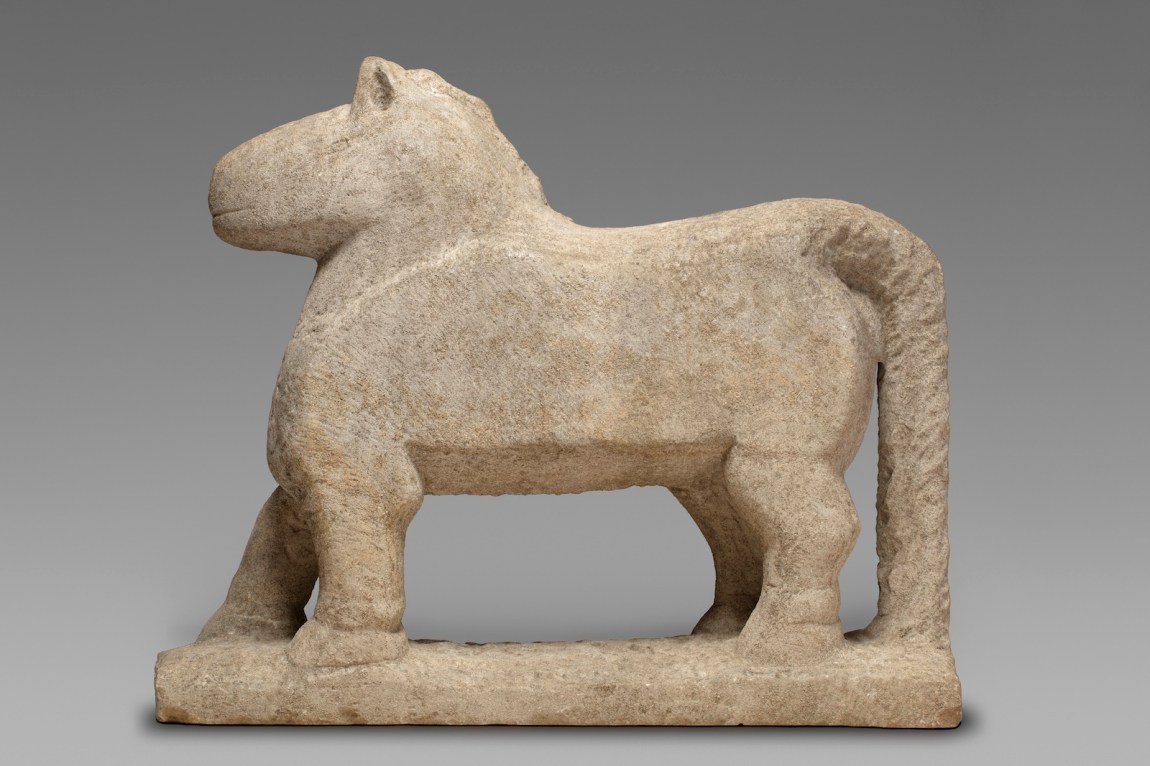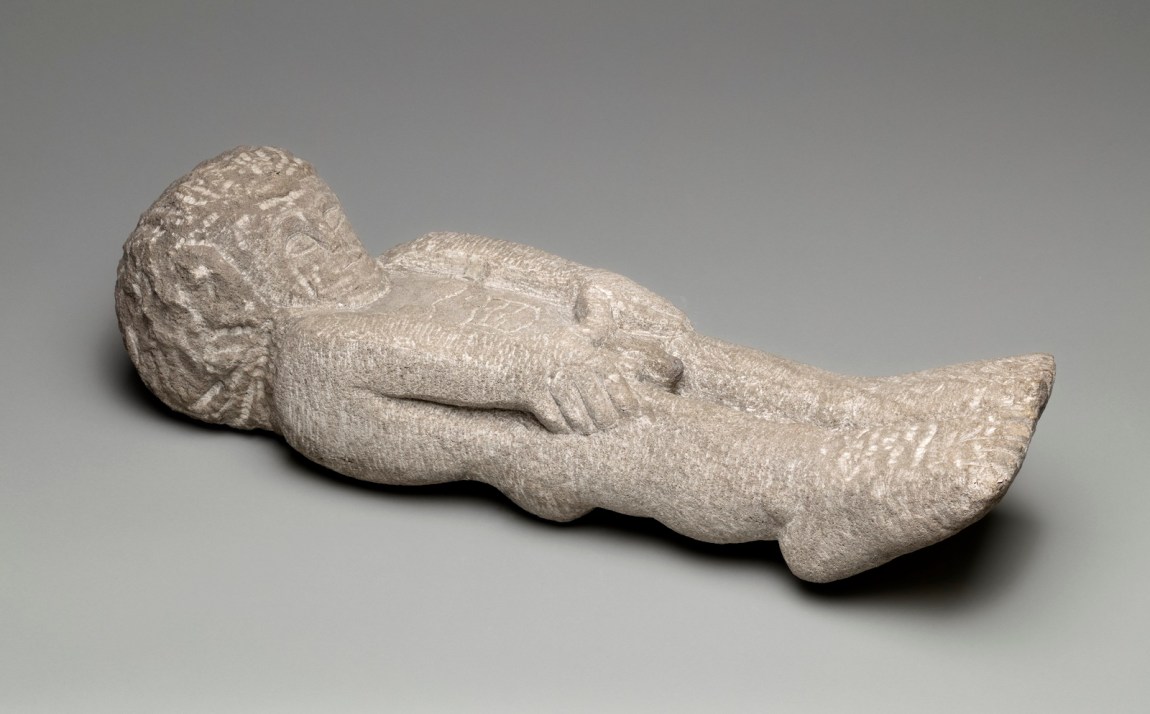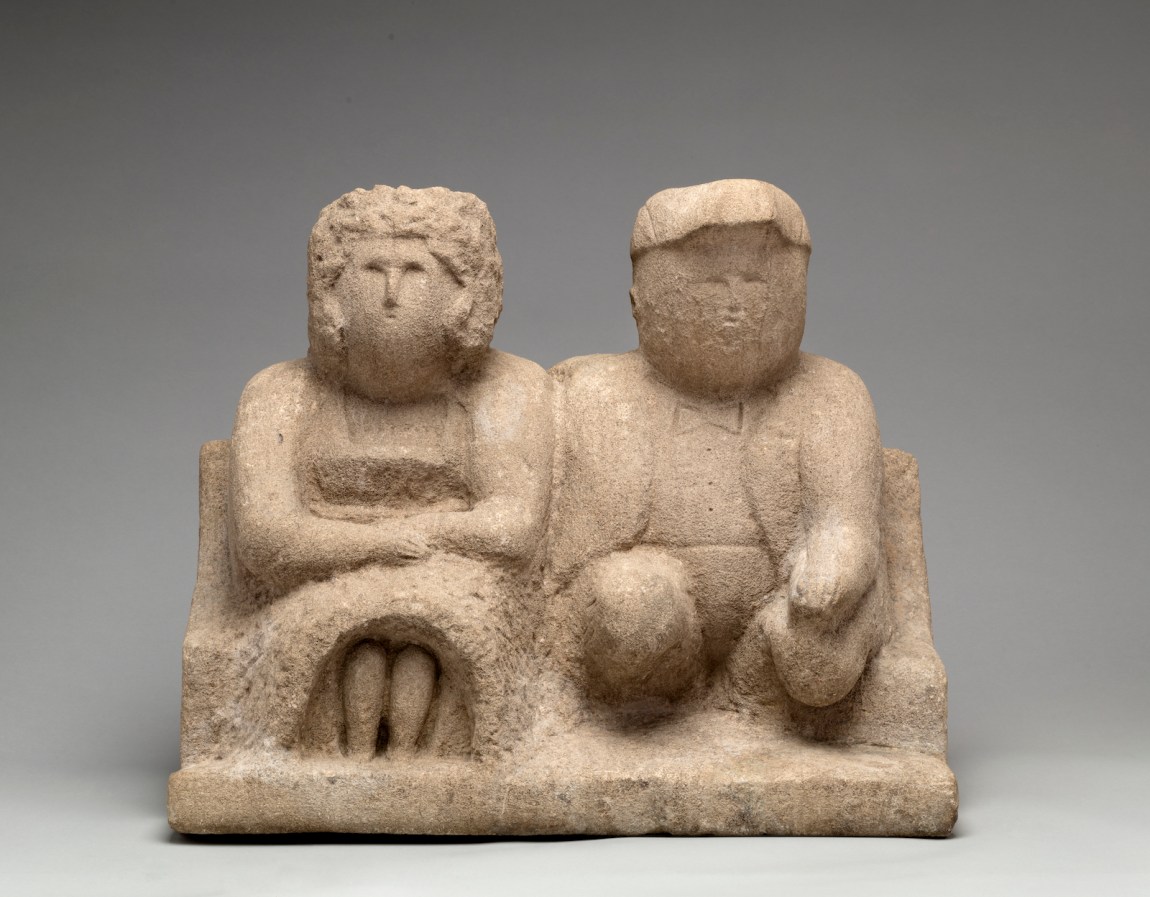When the Museum of Modern Art acquired a cast of Constantin Brancusi’s Bird in Space in 1934, the institution began its now-famous collection of international sculpture. The acquisition had high stakes. Slapped with an import tax as though it were an auto part, the Bird forced the US Customs Court to recognize the legitimacy of modern art. Decades later Brancusi’s tapered wisp of bronze is still one of the collection’s wind shears. It perches just on the cliff of meaning, between representation and abstraction.
A home game soon followed. Mounted in 1937, “Sculpture by William Edmondson” introduced a selection of works—animals, human figures, religious icons—hewn from limestone by the Tennessee stonemason into dramatically reduced forms, earthbound versions of Brancusi’s ideal. The show made Edmondson’s international career: the following year MoMA sent his work to Paris as part of “Three Centuries of American Art.” Since his death in 1951, a retrospective has come once a generation. When Nashville’s Cheekwood Estate & Gardens exhibited forty of his works in 2021, the high number on loan from the Supreme collaborator Kaws showed just how desirable Edmondson had become in the new century.
“The Sculpture of William Edmondson: Tombstones, Garden Ornaments, and Stonework,” abridged from that retrospective and currently on view at the McClung Museum of Natural History and Culture in Knoxville, Tennessee, displays only twelve of his sculptures. Exactly the size of his MoMA debut, and including a couple of pieces from it, the show is a celebration of form. Each of the sculptures is about the size of a baby and has an odd, confined squareness. Edmondson carved “stingily,” he said, from uniform municipal curbstones. Viewed head-on, his solemn upright Bride (undated) is flush against the edge of the block, her face, chest, and dressfront flattened to a level plane.
Then comes his trick: all this flatness conceals exaggerated curves. Viewed from the side, the Bride is humped like a camel. The back of her bodice curves outward, then the train of her dress doubles that curve, billowing to the far edge of the base. Above her an extravagantly arched bridal veil, like a jug handle, joins the far extremities of head and hem. Three Doves, a grouping of hard geometric crooks placed along a bar, likewise reveals the contours of what was once a curbstone: seen from the side, vague beaks, legs, and tails form hard capital Es tipped on their sides. Like Brancusi’s bird, just enough curvature gives away the avian subject, but not by much.
Edmondson combines the geometric and organic in delightful ways. If there is any fault to this show—and don’t let it keep you away—it is that the twelve pieces are lined up on the same central platform like soldiers. This obscures their trick of reduction. If you cheat and lean in between them you can see that trick more clearly, but from behind, the Bride’s chunky veil swallows her up into a perfect rectangle. The same with Horse and his tall prismatic tail. Crouch down and consider the sarcophagus-like Reclining Man. The six rounded bumps of his head, back, buttock, hamstring, calf, and heel—a lasagna wiggle in profile—vanish behind the crisp square of his footprint. Veil, tail, feet: each a distilled element of a greater whole.
In 1941 the photographer Edward Weston made a pilgrimage to meet Edmondson in Nashville. Weston’s shots of the sculptor’s studio appear in the show’s catalog (and Louise Dahl-Wolfe’s tender portraits of Edmondson and his lime-caked hands hang in the gallery). He documented the exquisite arrangement of Edmondson’s backyard workshop, clean limestone totems rising in staggered formation from crabgrass and sedge. Both men worshiped the power of shape to distort a familiar image. “My excitement was absolute aesthetic response to form,” Weston wrote in his diary in 1925 when he discovered that the curves of a porcelain toilet recalled the “chaste convolutions” of the Louvre’s Winged Victory of Samothrace. As professionals, both were on the up; Weston won a Guggenheim the year of Edmondson’s breakout exhibition.
Two aspects of Edmondson’s life have been persistent preoccupations. The first is that he received no formal training. Hence his typical, often condescending labels: folk art, primitive art, outsider art. A railroad worker and janitor, Edmondson turned to stonework only in his late fifties after losing employment during the Depression. On view here, a 1944 tombstone for Mary Alice Whitlow bears the signature bubble letters that identify his thirty-eight extant commissions in Nashville’s cemeteries. Weston said he wanted an Edmondson for his own grave. In contrast to the filed-smooth Three Doves, itself created to top a grave, the violently scalloped surface of Edmondson’s 1938 Birdbath shows how quickly he could chisel on the job. Like the sculptor John B. Flannagan, another early MoMA favorite, Edmondson carved directly, without making preliminary drawings. His first tool on any piece was a railroad spike.
Advertisement
The second is that Edmondson, born in 1874 to emancipated slaves, was Black. After MoMA’s ghastly press release, which introduced him as “a simple old Negro…entirely unspoiled, and happy in his work,” curators felt free to cast Edmondson as a Sambo-like sage with an accidental gift. His first proper retrospective, “Will Edmondson’s Mirkels” at Cheekwood in 1964, took its title from the slurred dialect in which journalists transcribed his quotes. “Miracles” were what his sculptures were, the artist had told Time magazine about his divine inspiration; and, as his early champion Dahl-Wolfe apparently retorted, nobody called him Will. In a perceptive 1993 essay, Romare Bearden, another Black Southern artist working outside the classical tradition, suggested that Edmondson’s famous talk of miracles and providence came from his racial consciousness under Jim Crow: “Edmondson knew what people expected him to say.” Since then, Black American influences have come front and center in most writing on Edmondson, especially on his playfully dense series of the Black boxer Jack Johnson (not on view).
The McClung show, with its stress on Edmondson’s aesthetic, avoids some of the traps into which critics and curators often fall when they concentrate on his education or his race. It is often said that MoMA gave Edmondson their first solo show by a Black artist, but it was Edmondson who did the bestowing. Indeed, what he gave MoMA in 1937 was the museum’s first solo show not just by a Black artist but also by an American-born sculptor. Only after him came shows for Flannagan in 1942 and the wire prodigy Alexander Calder in 1943. Those sculptors had already appeared in MoMA’s group shows, but Edmondson taught them that a strong enough aesthetic could stand alone.
If we let the unlikely circumstances of his fame outshine his formal achievements (as writing on him tends to do) or if we think of him as a “naïve” artist (an adjective not even Bearden could resist applying to the sculptor), then we’re not far from MoMA’s speculation in 1937 that Edmondson “has probably never seen a piece of sculpture not his own.” Never mind that when Edmondson first took up the chisel in 1931 a concrete replica of the Parthenon, with pediments based on Phidias, was being completed about a mile from his house. (The first draft, in brick, went up in 1897, when he was twenty-three.) By 1934, a little ways downtown, the Parthenon was reflected in the gleaming federal minimalism of Nashville’s “starved classical” post office, now the Frist Art Museum. (A near copy in Knoxville, the Post Office and Courthouse, stands near the McClung.) I find no coincidence that the angular eagles on its façade resemble Edmondson’s Eagle, currently in Clarksville.
This is the beauty of seeing Edmondson on his own turf. Those two buildings, which he would have known well, display the swerve from classical to modern. Between the great wars Appalachia was an open road for that swerve—from Black Mountain College in North Carolina to Frank Lloyd Wright’s Usonian homes in Tennessee and Alabama. It was a shift embodied by Weston’s commode and Edmondson’s commanding limestone sphinxes. It was why MoMA chose this cunning carver, at a time when European art still reigned, to represent an American modernism in three dimensions.






